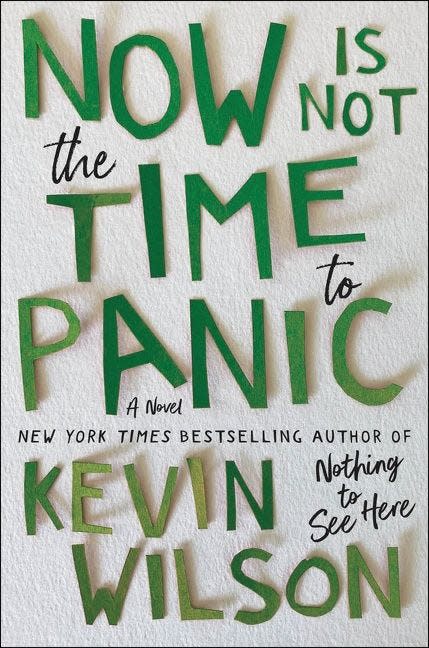'Now Is Not the Time to Panic': Kevin Wilson's new book destined to become a cult classic
The recent past must sound insane to kids raised on social media. You’d learn about concerts by seeing flyers stuck to telephone poles. You’d receive anonymous, vaguely threatening letters in the mail, instructing you to send out ten more anonymous letters, and you’d do it. Unknown graffiti artists like Jean-Michel Basquiat could gain notoriety, and then fame, from their subway art. You could get from the underground to the Museum of Modern Art. It was a real possibility.
But what would have happened to Basquiat if he’d been in a tiny southern town instead of New York? Would his paintings have led to civil unrest? Would he remain unknown? These questions – and more – are tackled by Kevin Wilson in “Now Is Not the Time to Panic,” (Ecco, 256 pp., ★★★★ out of four), a book destined to become a cult classic, if not just a classic, period.
‘Nothing to See Here’ except kids on fire in Kevin Wilson’s bizarre, fun novel

In the summer of 1996, two awkward 16-year-olds – Frances “Frankie” Budge, an aspiring writer, and Zeke Brown, an aspiring artist – meet at a public pool in Coalfield, Tennessee, and strike up the kind of kinetic friendship that we sense will end in a memorable coming-of-age romance, the kind that Netflix teen movies are made of, filled with open-window car drives to a soundtrack of the director’s favorite Replacements songs.
But Frankie and Zeke are so wildly uncomfortable in their own skins that even their furtive kisses feel painful as if both teens are afraid of becoming too physically close to each other, the notion of sex seemingly anathema to both. This makes sense when we learn about their broken or breaking families: both Frankie and Zeke are living with their single mothers; Frankie’s mother is divorced, Zeke’s mother is running from a cheating husband.
So instead of tumbling into John Green teen-passion territory, Frankie and Zeke find themselves – and their most profound emotional connection – by making art together: a poster that contains the phrase: “The edge is a shantytown filled with gold seekers. We are fugitives, and the law is skinny with hunger for us.”

They begin to anonymously place posters throughout their community, starting slow, and then as with any obsession, filling all their waking time on the project. Soon enough, copycats are making their own posters replete with the phrase. As with all provocative art, a segment of society begins to assume it is the work of Satan. Rumor, innuendo and the lies of teens coming home late eventually lead to suspicion, then violence, then death, then corporatization and commercialism and finally into a bit of urban mythology known as the Coalfield Panic.
All while the creators remained hidden.
Wilson wisely keeps the focus on the teens, letting the Sturm und Drang remain largely in the ether around them, a gnawing thing that begins to force the young couple – and their tight little world – apart. And that would be enough to make “Now Is Not the Time to Panic” a compelling piece of work, but Wilson digs deeper, interspersing into the novel Frankie in her current life as a successful writer, wife and mother… who still harbors the secrets of that summer… and still lives on the edge, still finds herself a fugitive, leaving posters throughout her domestic life.
“Now Is Not The Time to Panic” departs from the comic surrealism of Wilson’s previous novels like “Nothing to See Here” and “The Family Fang” in favor of a kind of sepia-toned realism that never ceases to entertain. Frankie and Zeke are wholly original characters, their lives painful and true, and while this is a novel you can read in a single sitting, it is best devoured slowly, a treat for the heart and mind.
This article originally appeared on USA TODAY: 'Now Is Not the Time to Panic' destined to become a cult classic

